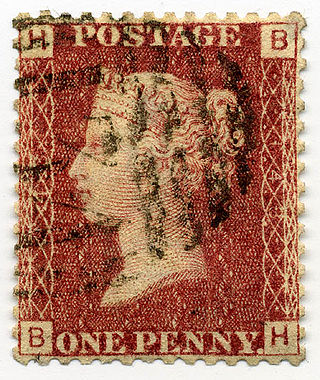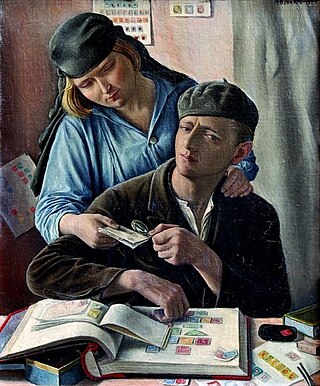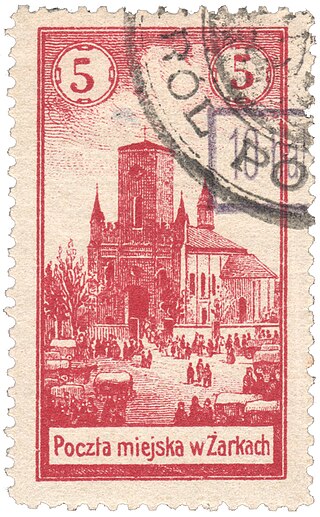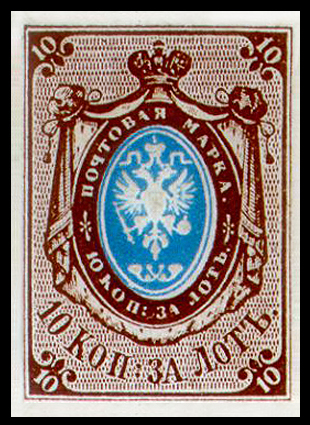
Philately is the study of postage stamps and postal history. It also refers to the collection and appreciation of stamps and other philatelic products. Philately involves more than just stamp collecting or the study of postage; it is possible to be a philatelist without owning any stamps. For instance, the stamps being studied may be very rare or reside only in museums.

A postage stamp is a small piece of paper issued by a post office, postal administration, or other authorized vendors to customers who pay postage. Then the stamp is affixed to the face or address-side of any item of mail—an envelope or other postal cover —which they wish to send. The item is then processed by the postal system, where a postmark or cancellation mark—in modern usage indicating date and point of origin of mailing—is applied to the stamp and its left and right sides to prevent its reuse. Next the item is delivered to its addressee.

Stamp collecting is the collecting of postage stamps and related objects. It is an area of philately, which is the study of stamps. It has been one of the world's most popular hobbies since the late nineteenth century with the rapid growth of the postal service, as a never-ending stream of new stamps was produced by countries that sought to advertise their distinctiveness through their stamps.

A cancellation is a postal marking applied on a postage stamp or postal stationery to deface the stamp and to prevent its reuse. Cancellations come in a huge variety of designs, shapes, sizes, and colors. Modern cancellations commonly include the date and post office location where the stamps were mailed, in addition to lines or bars designed to cover the stamp itself. The term "postmark" refers specifically to the part that contains the date and posting location, but the term is often used interchangeably with "cancellation" as it may serve that purpose. The portion of a cancellation that is designed to deface the stamp and does not contain writing is also called the "obliteration" or killer. Some stamps are issued pre-cancelled with a printed or stamped cancellation and do not need to have a cancellation added. Cancellations can affect the value of stamps to collectors, positively or negatively. Cancellations of some countries have been extensively studied by philatelists, and many stamp collectors and postal history collectors collect cancellations in addition to the stamps themselves.

For postage stamps, separation is the means by which individual stamps are made easily detachable from each other.
In philately, gum is the substance applied to the back of a stamp to enable it to adhere to a letter or other mailed item. The term is generic, and applies both to traditional types such as gum arabic and to synthetic modern formulations. Gum is a matter of high importance in philately.

Expertization is the process of authentication of an object, usually of a sort that is collected, by an individual authority or a committee of authorities. The expert, or expert committee, examines the collectible and issues a certificate typically including:

The postage stamps and postal system of the Confederate States of America carried the mail of the Confederacy for a brief period in American history. Early in 1861 when South Carolina no longer considered itself part of the Union and demanded that the U.S. Army abandon Fort Sumter, plans for a Confederate postal system were already underway. Indeed, the Confederate Post Office was established on February 21, 1861; and it was not until April 12 that the American Civil War officially began, when the Confederate Army fired upon US soldiers who had refused to abandon the fort. However, the United States Post Office Department continued to handle the mail of the seceded states as usual during the first weeks of the war. It was not until June 1 that the Confederate Post Office took over collection and delivery, now faced with the task of providing postage stamps and mail services for its citizens.

In general, philatelic fakes and forgeries are labels that look like postage stamps but have been produced to deceive or defraud. Learning to identify these can be a challenging branch of philately.
Russian stamps have been extensively forged. Both rare and common stamps have been forged and certain stamps, for instance those of the Army of the North, are more common forged than genuine.

François Fournier was a stamp forger who thought of himself as a creator of "art objects" and a friend of the little man.
The Philatelic Foundation is a philatelic organization granted a charter in 1945 by the University of the State of New York as a Nonprofit Educational Institution.
In philately, a regummed stamp is any stamp without gum, or without full gum, that has had new gum applied to the back to increase its value.

Postage stamp paper is the foundation or substrate of the postage stamp to which the ink for the stamp's design is applied to one side and the adhesive is applied to the other. The paper is not only the foundation of the stamp but it has also been incorporated into the stamp's design, has provided security against fraud and has aided in the automation of the postal delivery system.
The value of a postage stamp in the stamp collecting market depends on various features of its condition. Among the features assessed are centering, margins, and gum.

The Stock Exchange forgery was a fraud perpetrated at the London Stock Exchange during the years 1872 to 1873. It involved forged postage stamps that were applied to telegraph forms and it was only detected over 25 years later.

Edward Loines Pemberton was a pioneering philatelist and stamp dealer who was a leading advocate of the scientific school of philately and a founding member of The Philatelic Society, London, now The Royal Philatelic Society London. Pemberton was entered on the Roll of Distinguished Philatelists in 1921 as one of the fathers of philately. He was born in New York City but educated in Britain by relatives when his parents died shortly after his birth. His son, Percival Loines Pemberton (1875-1949) was also an eminent philatelist.

Dieter Bortfeldt FRPSL was a graphic designer and award-winning philatelist who was a specialist in the philately of Colombia. He designed the "Famous Colombians" and "Tourism" postage stamps of Colombia issued in 1993.

A local postal service briefly operated in the Polish town of Żarki during the month of October 1918. Postage stamps were issued, in one design but in three denominations denoted by different colouring. A set of forgeries was made in 1928. The stamps, both genuine and forged, have attracted philatelic attention.

The first stamp of the Russian Empire was a postage stamp issued in 1857 and introduced within the territory of the Russian Empire in 1858. It was an imperforate 10-kopeck stamp depicting the coat of arms of Russia, and printed using typography in brown and blue.
















